Abstract
Background: Systemic risk studies in the coronavirus disease 2019 (COVID-19) period focus mostly on the banking sector. Regulators however, yearn for data on the contribution of shadow banking to systemic risk during the pandemic.
Aim: The primary goal of the study is to determine the contribution of shadow banking to systemic risk during the COVID-19 period in South Africa.
Setting: The study focussed on shadow banking, non-bank financial institutions involved in credit intermediation outside the traditional banking system in South Africa.
Method: Systemic risk is measured by conditional value-at-risk methodology using monthly market returns of fixed-income funds, funds-of-funds, money market funds and multi-asset funds from January 2015 to December 2021.
Results: Shadow banking contributed to systemic risk during COVID-19, and systemic risk reached an all-time high during the onset of the pandemic. Money market funds exhibited higher systemic risk because of the COVID-19 shock. However, multi-asset funds and funds-of-funds are the classes that contributed more to systemic risk during the COVID-19 period. Furthermore, systemic risk trends of multi-asset funds and funds-of-funds increased with the rise in COVID-19 infections, except in the third wave when systemic risk peaked months after the surge in COVID-19 cases.
Conclusion: Shadow banking contributes to systemic risk in South Africa and systemic risk peaked during the COVID-19 period.
Contribution: There is growing evidence on systemic risk during COVID-19, and this study extends the focus to shadow banking. It draws attention of regulators to credit intermediation outside traditional banks.
Keywords: CoVaR; COVID-19; shadow banking; systemic risk; South Africa.
Introduction
COVID-19 renewed focus on the stability of the financial system globally and the regulators are concerned about the risk of the financial system meltdown during the pandemic and other periods of financial turmoil. The threat to the stability of the financial system stems from loss of income, high defaults in loans and decline in savings and investments resulting in liquidity shortages and constraints in the supply of credit to businesses and households (Kiyotaki & Moore 1997). Liquidity shortages can trigger fire sales and cause failure of multiple financial institutions or systemic risk (Allen & Gale 2018; Brunnermeier & Pedersen 2009). Systemic risk in the banking sector was high during the COVID-19 period (Baumöhl et al. 2022b; Borri & Giorgio 2022; Chatterjee & Sing 2021; Liu, Xu & Jiang 2021; Rizwan, Ahmad & Ashraf 2020; So, Chan & Chu 2021; Yan, Jeon & Wu 2023), and the studies focussed mostly in the banking sector because banks holds large financial assets in most economies, and their collapse could have far reaching consequences for the financial system. The assessment of the global financial system and markets shows that shadow banking, non-bank financial institutions (NBFIs) involved in credit intermediation outside traditional banking system, has grown at a faster rate in emerging economies in the past decade (FSB 2021). The rapid growth of shadow banking warrants for studies on the contribution of shadow banking to systemic risk, especially when the financial system is vulnerable to liquidity shortages.
South Africa is an interesting case for assessing the contribution of shadow banking to systemic risk during COVID-19. Firstly, South Africa is among the emerging economies that reported swift growth of shadow banking since 2008 (FSB 2021). Shadow banking growth in the country is mainly driven by multi-asset funds. Multi-asset funds, compliant with the South African Pension Fund Act 24 of 1956 regulation 28 are popular for pension savings and receive high inflows. Secondly, the country had the highest COVID-19 infections and deaths compared to other African countries (WHO 2021). As shown in Figure 1, the first case of COVID-19 in South Africa was reported on 05 March 2020, and by the end of 2021, the country had recorded four waves of COVID-19 infections and over 3.4 million new COVID-19 cases. To curb the spread of COVID-19 infections, South Africa announced a national lockdown, a curfew on business trading, travels and gatherings between March 2020 and June 2022.
 |
FIGURE 1: Coronavirus disease 2019 infections in South Africa, 05 March 2020–31 December 2021. |
|
South Africa introduced financial relief programme during the COVID-19 period, including 3 months loan repayment deferment for businesses and individual consumers. The South African Reserve Bank (SARB) reduced the repo rate from 6.5% to 3.75% in the first half of 2020, increased the size and duration of repo facilities and partnered with the national treasury to implement loan guarantee schemes for businesses. On the interventions for banks, the SARB introduced capital relief on restructured loans, a lower liquidity coverage ratio and lower capital requirements. Despite all the interventions implemented, banks experienced an increase in funding costs and high defaults in loans (SARB 2021) and systemic risk in the banking sector in South Africa reached an all-time high during the pandemic (Chatterjee & Sing 2021).
The financial shock during COVID-19 was also reported in the shadow banking. Money market funds experienced large withdrawals such that some had to sell their assets to meet the redemptions demands (SARB 2021). In South Africa, money market funds are an important source of liquidity for banks (Kemp 2017). They mobilise deposits from individual and wholesale funders and use the funds to provide liquidity for banks. Similarly, fixed-income funds invest mainly in banks, but multi-asset funds invest in diversified portfolios including stocks, bonds, real estate and cash (ASISA 2021). Funds-of-funds invest in other funds comprising broad spectrum of portfolios. In essence, shadow banking in South Africa could be a significant source of systemic risk because they use liquid and short-term deposits to secure long-term investments, which often become unavailable during uncertain periods such as COVID-19.
In this article, we assess the contribution of shadow banking to systemic risk during COVID-19 in South Africa. Firstly, we focus on the contribution of shadow banking to systemic risk prior and during COVID-19. Secondly, we examine the contribution of shadow banking to systemic risk during different stages (waves) of COVID-19. We fill the literature gap on the contribution of shadow banking to systemic risk during COVID-19, particularly in South Africa. Evidence on the contribution of shadow banking to systemic risk during periods of economic and financial turmoil is important for the development of targeted monitoring frameworks and appropriate policy responses for the prevention of the financial system meltdown. The rest of the sections are organised as follows: ‘Literature’ section reviews theoretical and empirical literature, ‘Methodology’ section describes the research methodology, ‘Results’ section presents empirical findings, and the final section proffers ‘Discussion and conclusion’.
Literature
Theoretical concept
We begin this section with definitions of key concepts, that is shadow banking and systemic risk. Shadow banking is defined as ‘credit intermediation involving entities and activities outside the regular banking system’ (FSB 2011:3). Broadly, this definition comprises all NBFIs that perform a core bank function of credit intermediation. However, the narrow measure focusses on a group of NBFIs that are susceptible to runs, depend on short-term funding to support lending activities, facilitate credit creation, perform securitisation-based credit intermediation and are involved in market activities dependent on short-term funding or secured funding of client assets (FSB 2020). Accordingly, the structure and composition of shadow banking varies between countries (FSB 2020). In South Africa, the narrow definition of shadow banking includes money-market funds, multi-asset funds, fixed-income funds, hedge funds, funds-of-funds, finance companies, activities of brokers, securitisation schemes (excluding securitisation that banks invest in) and credit insurance (Kemp 2017). The narrow definition excludes those institutions not involved in credit intermediation, those institutions or activities that are under prudential regulation and those involved in small-scale activities (Kemp 2017).
The activities of shadow banking entities could pose a threat to the stability of the financial system when there is a trigger causing liquidity shortages (Moreira & Savov 2017). An event that leads to excess demand for liquidity in the short term may lead to the liquidation of long-term assets in the financial system (Moreira & Savov 2017). Premature liquidation of long-term assets is costly and could cause a decline in asset value (Allen & Gale 2018). However, the decline in asset value could also occur because of other factors such as changes in the business cycle, burst bubbles in real estate, mispricing and sovereign defaults (Allen & Carletti 2013). Altogether, the fall of asset prices could cause a failure of one or more financial institutions or systemic risk. Systemic risk is defined as ‘a risk of disruption to financial services that is caused by an impairment of all parts of the financial system and has a potential to have serious negative consequences for the real economy’ (IMF et al. 2009:5).
Systemic risk is explained by various theories, inter alia, externality theory and financial contagion (Allen & Gale 2018; Buchanan & Stubblebine 1962). Systemic risk, as a negative externality, occurs when a financial institution’s activities result in a cost by reducing asset prices of other financial entities in the system (Buchanan & Stubblebine 1962). Asset prices decline rapidly during periods of shocks, such as COVID-19, because of low productivity linked to loss of income and decline in savings and investments. A shock that affects productivity may reduce credit supply and investment (Kiyotaki & Moore 1997). In simpler explanation, loans are collateralised on assets, and when there is low productivity, it propels credit-constrained firms to sell assets, resulting in asset prices falling. In this regard, firms are not able to borrow to sustain investment because of collateral constraints and a decline in investment further causes asset prices to fall (Kiyotaki & Moore 1997). A decline in asset prices could spill over to one or more financial institutions that are connected through crossholding of assets, causing contagion (Allen & Gale 2018). Contagion is the most important cause of systemic risk and arises from common asset exposure and uncertainties in the markets (Allen & Carletti 2013).
The severity of financial contagion could be mitigated in an economy that has a developed financial system. The financial sector development enhances productivity through efficient allocation of resources to the most productive agents in the economy (Bekele & Degu 2021). However, the effect of financial sector development on productivity diminishes after reaching a threshold (Bahri, Nor & Nor 2018), and efficient allocation of resource may be insufficient to spur productivity, reduce loss of income and improve investment, and prevent shocks propagation within the financial system.
Empirical literature
Empirical literature, mostly from the banking sector, shows high levels of systemic risk during periods of economic downturn or financial turbulence (Drakos & Kouretas 2015; Roengpitya & Rungcharoenkitkul 2012; Verma et al. 2019). Similarly, recent studies report high systemic risk during COVID-19 (Abuzayed et al. 2021; Baumöhl et al. 2022b; Borri & Giorgio 2022; Chatterjee & Sing 2021; Lan, Huang & Huang 2020; Liu et al. 2021; Rizwan et al. 2020; So et al. 2021; Yan et al. 2023). Systemic risk increased sharply during the onset of the pandemic (Duan et al. 2021; Liu et al. 2021; Rizwan et al. 2020; Zhang, Hu & Ji 2020). However, the trend is followed by a flattened curve in response to various policy interventions as shown in the sample from China (Rizwan et al. 2020).
Systemic risk during COVID-19 is higher than in any other period in several countries including South Africa (Abuzayed et al. 2021; Baumöhl et al. 2022b; Borri & Giorgio 2022; Chatterjee & Sing 2021; Liu et al. 2021; Rizwan et al. 2020; So et al. 2021). Baumöhl et al. (2022a) analysed data of banks from 24 countries from America, Europe, and Asia, and found that systemic risk during COVID-19 was higher than during any other period, even higher than during the 2008–2009 global financial crisis. Chatterjee and Sing (2021) reached a similar conclusion in South Africa. Altogether, evidence shows that systemic risk is all-time high during the COVID-19 period, and reaches a peak during the onset of the pandemic. Global economies faced unprecedented economic lockdowns during COVID-19 that led to sharp declines in stock markets and decrease in liquidity and assets because of repayment delays or high default in loans around the world.
The literature on the contribution of shadow banking to systemic risk, generally covers only a few studies and most of those studies were conducted before COVID-19. Maharani (2015) focussed on trusts and investment corporations in China and reported that the contribution of shadow banking to systemic risk is small or moderate, with fluctuations over time. Another study performed in China focussing on trust, securities, fund, insurance companies and commercial banks participating in shadow banking, identified trust funds as the largest contributor to systemic risk and reported shocks spill over from shadow banking to the banking sector (Tian et al. 2015). In contrast, a study in the United Kingdom reported that shadow banking, money market funds, are more likely to have reduced systemic risk during the global financial crisis (GFC) (Pellegrini, Meoli & Urga 2017). Money market funds are an important source of liquidity, especially during periods of financial shocks, and as such they serve as liquidity buffer in the financial system. Altogether, literature suggests that shadow banking contributes to systemic risk, but this varies between countries and different types of shadow banking entities.
Methodology
Data
We used the monthly market returns data obtained from Morningstar. The data cover the period from January 2015 to December 2021, and we confined the analysis to this period because significant data for the prior years were missing. We split the series into pre-COVID-19 and COVID-19, and the COVID-19 interval is from March 2020 onwards; the month in which the first case of COVID-19 was reported, and government curfews and lockdowns were implemented. The final dataset has 466 funds: 236 multi-asset funds, 164 funds-of-funds, 43 fixed-income funds and 23 money market funds. This represent 49% of multi-asset funds and funds-of-funds, 53% of fixed-income, and 60% of money market funds that are classified as shadow banking under the narrow definition of shadow banking.
We could not access the market returns data for activities of brokers, credit insurance, finance companies, hedge funds and securitisation schemes (excluding securitisation that banks invest in); therefore, these entities were excluded from the analysis. Financial sector returns, closing prices of Johannesburg Stock Exchange (JSE) Top 40 Returns, South African Volatility Index (SAVI) were retrieved from data depository, Iress. The 10-year government bond and 3-month Treasury bills (T-bills) data were accessed from the SARB. The variables were converted into logs following the formula in Equation 1:
where Xit is the change in price, Pit is the closing price of state variable i on month t, and Pt−1 is the previous price.
Measuring systemic risk
We measure systemic risk following CoVaR (conditional value at risk) methodology (Adrian & Brunnermeier 2016). There are many other measures of systemic risk, and CoVaR and Delta CoVaR (ΔCoVaR) are the most common in systemic risk literature (Dičpinigaitienė & Novickytė 2018). Nevertheless, these measures are criticised for their failure to detect asymptotic tail dependence when tail dependence is weak (Guntay & Kupiec 2014). Furthermore, CoVaR and ΔCoVaR do not distinguish whether a contribution to systemic risk is causal or is because of a common factor (Adrian & Brunnermeier 2016). In this regard, we do not distinguish whether systemic risk arises from domino effects or because of common assets or market exposures.
Estimation methodology
We applied quantile regression to estimate CoVaR and ΔCoVaR (Adrian & Brunnermeier 2016). The advantage of quantile regression is its efficient use of data, and that it produces conditional quantiles without the distributional assumptions (Adrian & Brunnermeier 2016). Generalised autoregressive conditional heteroskedasticity (GARCH) is more robust in detecting tails than quantile regression (Adrian & Brunnermeier 2016). However, GARCH and quantile regression generate similar patterns of systemic risk contribution and both approaches lead to similar conclusion (Adrian & Brunnermeier 2016). We follow the quantile regression approach in line with systemic risk studies in South Africa (Chatterjee & Sing 2021; Leukes & Mensah 2019; Manguzvane & Mwamba 2019).
All quantile regression models had the financial sector returns as the dependent variable and the returns of the individual funds as independent variables. A set of state variables were included as independent variables to produce the time varying CoVaR and ΔCoVaR. The state variables are equity market returns, an indirect proxy for intrinsic financial system risk; the SAVI measuring risk within the equity market; and yield spread capturing changes in the business cycle. The yield spread is the difference between the 10-year South Africans government bond and the 3-month South African T-bills rate. A 1-month lag was applied in all state variables. The inclusion of lagged state variables in the model allows to capture the variation in tail risk not directly related to the financial system risk exposure. Overall, this approach gives a forward-looking systemic risk contribution. The quantile regression model is specified as in Equation 2:
where  is the q percent VaR of the financial system conditioned on the returns of fund i. Therefore, the quantile regression of the VaR of the financial system conditional on fund i being in distress is specified as in Equation 3: is the q percent VaR of the financial system conditioned on the returns of fund i. Therefore, the quantile regression of the VaR of the financial system conditional on fund i being in distress is specified as in Equation 3:
where  is the VaR of the system when fund i is in distress. The marginal contribution of individual fund i to systemic risk was calculated as the difference between CoVaR conditioned on fund i in distress from CoVaR conditioned on fund i in normal state. CoVaR conditioned on fund i in normal state is denoted by (Equation 4): is the VaR of the system when fund i is in distress. The marginal contribution of individual fund i to systemic risk was calculated as the difference between CoVaR conditioned on fund i in distress from CoVaR conditioned on fund i in normal state. CoVaR conditioned on fund i in normal state is denoted by (Equation 4):
 is the 50% VaR of institution i and was used to represent an institution that is operating in a normal state. The marginal contribution to systemic risk is as in Equation 5: is the 50% VaR of institution i and was used to represent an institution that is operating in a normal state. The marginal contribution to systemic risk is as in Equation 5:
or Equation 6:
where  is the marginal contribution of an institution i to systemic risk. is the marginal contribution of an institution i to systemic risk.
We estimated quantile regressions for pre-COVID-19 and COVID-19 intervals, and interpreted the results at 5% significance level. Thereafter, we drew trends of ΔCoVaR on fixed-income funds, funds-of-funds, money market funds and multi-asset funds that contribute to systemic risk during COVID-19.
We estimated the principal component analysis (PCA), a multi-factor model that estimates the decomposition of the covariance matrix of large samples into factor loadings and residual components (Abdi & Williams 2010). The practical steps to estimating PCA is discussed in detail by Tharwat (2016). Accordingly, in our approach we firstly transform the CoVaR and ΔCoVaR of individual fixed-income funds, funds-of-funds, money market funds and multi-asset funds as in Equation 7:
where p variates SB1, SB1 … SBP are observed on n fixed-income funds, funds-of-funds, money market funds, and multi-asset funds; ai1, ai2, … aip are the coefficients calculated so that TK1, the first principal component, makes the greatest contribution to the variance as contained in the p number of the original variables. In the PCA, we include all fixed-income funds, funds-of-funds, money market funds, and multi-asset funds that contribute to systemic risk during COVID-19. Secondly, we estimated the factors and their eigenvalues, and as rule of thumb, we kept only the factors that account for greater than 10% variance (eigenvalues > 1) in the analysis. In order to make substantive interpretation of the main factors, we interpret factor loadings where the variables loadings are greater than 10% (> 0.1). Finally, we analysed the length of time between the surge in COVID-19 and peak in systemic risk, ΔCoVaR, among funds with greater than 10% factor loadings in the PCA component 1.
Ethical consideration
The study was non-human subjects research and was reviewed and approved by the ethics committee at the Stellenbosch University, Social, Behavioural and Education Research Ethics Committee (No. USB-2021-24230).
Results
Descriptive statistics of state variables and financial sector returns are summarised in Table 1. All results are interpreted at 5% significance level. The average equity market and financial sector returns are higher and more volatile during COVID-19 compared to pre-COVID-19. Equity market returns follow a normal distribution, with skewness close to 0 in both intervals and with kurtosis of 2.30 pre-COVID-19 and 3.25 during COVID-19.
| TABLE 1: Descriptive statistics of state variables. |
Financial sector returns are symmetrical through pre-COVID-19 but skewed to the left during COVID-19 (Table 1). South African Volatility Index distribution is leptokurtic and skewed to the right in both periods. The market volatility increases remarkably, with a standard deviation of 18.36% during COVID-19 compared to 9.20% pre-COVID-19. Similarly, 10-year government bonds and 3-month T-bills are more volatile during COVID-19. The yield spread is skewed to the right during COVID-19, and the maximum yield spread is 54.65% during COVID-19 compared to 25.95% pre-COVID-19.
A highlight of descriptive statistics of funds is shown in Online Appendix 1, and the complete table is available from the authors. The average returns of 346 funds increase, and the majority of multi-asset funds, funds-of-funds and fixed-income funds have higher returns during COVID-19. In contrast, the returns of all money market funds are lower during COVID-19 compared to pre-COVID-19. The distribution of 280 funds is symmetrical, with kurtosis between 2.50 and 3.49 during pre-COVID-19. Most funds have higher standard deviation, meaning they are more volatile during COVID-19. Multi-asset funds are the most volatile, and money market funds are the least during both periods.
A highlight of the CoVaR estimates at a 5% significance level for individual funds is presented in Online Appendix 2, and the complete table is available from the authors. Most funds contribute to systemic risk during pre-COVID-19 (Figure 2). In this period, 144 funds contribute to systemic risk compared to 59 funds during COVID-19. In the pre-COVID-19 period, the CoVaR of 74 funds-of-funds, 66 multi-asset funds, and four fixed-income funds are statistically significant. Money market funds do not contribute to systemic risk during pre-COVID-19, as their CoVaR is statistically insignificant. However, the CoVaR of 7 money market funds is statistically significant during COVID-19. More multi-asset funds than other funds contribute to systemic risk during COVID-19, with the CoVaR of 33 funds statistically significant. Sixteen funds-of-funds and three fixed-income funds also contribute to systemic risk during COVID-19. The CoVaR of 27 funds is statistically significant during both the pre-COVID-19 and COVID-19 intervals, and those funds comprises 13 multi-asset funds, 12 funds-of-funds, and 2 fixed-income funds.
 |
FIGURE 2: Trend of statistically significant funds during COVID-19, January 2015 to December 2021. |
|
The individual funds’ contribution to systemic risk is higher during COVID-19 compared to pre-COVID-19. The CoVaR of the largest contributor to systemic risk during COVID-19 is 29.19% compared to 5.64% in the pre-COVID-19 period. The largest contributor to systemic risk during COVID-19 is statistically insignificant during the pre-COVID-19 period. Similarly, the largest contributor to systemic risk during the pre-COVID-19 period is statistically insignificant during COVID-19. The largest contributors to systemic risk during COVID-19 are seven money market funds, whereas the largest contributors during pre-COVID-19 are a fund-of-fund followed by two multi-asset funds. For all funds that contribute to systemic risk in both periods, their CoVaR is higher during COVID-19 compared to pre-COVID-19. Among those funds, the largest contributors to systemic risk during both periods are multi-asset funds, with the highest CoVaR at 5.56% pre-COVID-19 and 8.70% during COVID-19.
The marginal contribution to systemic risk is measured by ΔCoVaR and the highlight of the results are presented in Online Appendix 2. The interpretation of ΔCoVaR focusses on previously statistically significant CoVaR results at 5% significance level. Money market funds have the largest marginal contribution to systemic risk during COVID-19. The ΔCoVaR of money market funds is greater than that of all other funds. The two largest contributors to systemic risk are money market funds and they have a ΔCoVaR of 24.31% and 22.41%, respectively. Multi-asset funds are the second largest contributors to systemic risk during COVID-19, followed by funds-of-funds and fixed-income funds. However, in the pre-COVID-19 period, multi-asset funds are the largest contributors to systemic risk. A multi-asset fund with the largest marginal contribution to systemic risk in pre-COVID-19 times has a ΔCoVaR of 6.06%. The second largest contributor to systemic risk during pre-COVID-19 is another multi-asset fund with a ΔCoVaR of 5.95%, followed by a fund-of-fund with a ΔCoVaR of 5.92%.
Figure 3 highlights the CoVaR and ΔCoVaR trends of all funds that contributes to systemic risk during COVID-19. As shown in Figure 2, some of these funds are also statistically significant in the pre-COVID-19 analysis. Money market funds are only significant during COVID-19. Systemic risk, CoVaR and ΔCoVaR, of all funds except for money market funds increase sharply during the onset of COVID-19, between March and June 2020. Fixed-income funds, funds-of-funds and multi-asset funds reach their highest systemic risk levels at different periods during COVID-19. For all funds, the subsequent systemic risk high points are lower than the first peak, except for ΔCoVaR of funds-of-funds where the first and second peaks are almost equal (see Figure 4). Altogether systemic risk has four high points during COVID-19 and reaches an all-time high during the onset of the pandemic and at that point, systemic risk is higher than any time in the pre-COVID-19 period.
 |
FIGURE 3: The CoVaR of funds that contribute to systemic risk during COVID-19, January 2015 to December 2021. |
|
 |
FIGURE 4: Trends of statistically significant ΔCoVaR during COVID-19, January 2015 to December 2021. |
|
Systemic risk trend of money market funds is different to that of all other funds. The CoVaR and ΔCoVaR of money market funds move towards lower systemic risk during COVID-19, starting from a higher level in the pre-COVID-19 period (see Figure 3 and Figure 4). However, CoVaR analysis of money market funds are statistically insignificant in the pre-COVID-19 analysis, and the interpretation of their trend focusses only on the COVID-19 period. Systemic risk of money market funds has several peaks during COVID-19, but those peaks are less intense compared to all other funds. Despite, money market funds has on average higher systemic risk when considering the entire COVID-19 period because they start from higher levels during the onset of the pandemic. Furthermore and similar to other funds, there is a sharp increase in systemic risk among money market funds, especially ΔCoVaR, during the onset of the pandemic (see Figure 4).
Online Appendix 3 shows the results of the PCA and the analysis focus on CoVaR and ΔCoVaR of funds that contribute to systemic risk during COVID-19. The first two components contribute 80% of the variations in contribution to systemic risk, CoVaR. Component 1 explains 70% of variations in systemic risk, and its highest factor loadings are from funds-of-funds and multi-asset funds (Online Appendix 3). The highest factor loadings for the second component are from money market funds. Similar results are observed with the PCA of the marginal contribution to systemic risk, ΔCoVaR. Funds-of-funds and multi-asset have higher factor loadings in the first component, and they explain 51% of the variations in systemic risk. Fixed-income funds have a higher factor loading together with funds-of-funds and multi-asset funds in the second component. Money market funds have higher factor loadings in the third component, and the third component contributes 12% of the variation in marginal contribution to systemic risk. Altogether, the PCA results for both CoVaR and ΔCoVaR show that more diverse and long-term portfolios explain greater variations in systemic risk during COVID-19.
In order to understand the events of COVID-19 surge and systemic risk, we focus narrowly and more in-depth on 51 funds identified through the PCA of ΔCoVaR. We select only funds with factor loadings to component 1 – a factor that explains the most variations in the marginal contribution to systemic risk. Ultimately, the analysis of the length of time between the surge of COVID-19 and the peak in the marginal contribution to systemic risk includes 22 funds-of-funds and 29 multi-asset funds. The results of the length of time between the surge of COVID-19 and the peak in the marginal contribution to systemic risk are shown in Figure 5.
 |
FIGURE 5: Length of time between the start of surge in COVID-19 and peak systemic risk. |
|
As shown in Figure 5, the peak on marginal contribution to systemic risk coincides with COVID-19 surge during the first wave. However, ΔCoVaR of 14 funds peaks before June 2020, and most of them peaks in March 2020 when the first case was reported in South Africa. All funds that reach the highest marginal contribution to systemic risk before COVID-19 surge-month are conservative and focus on long-term investment – more than 5 years. The ΔCoVaR of most funds’ peaks earlier than the surge-month in the second wave of COVID-19, and there are only three that peaks after the surge-month. However, in the third wave, the majority of funds peaks two months after COVID-19 surge (Figure 5). Overall, ΔCoVaR reach the highest point either before or during COVID-19 surge in the first two waves but delay by two months in the third wave (Figure 5). Across all COVID-19 waves, three funds-of-funds and one multi-asset fund reaches their highest marginal contribution to systemic risk before the surge of COVID-19.
Discussion
Systemic risk increases during times of financial turbulence, including the COVID-19 period (Baumöhl et al. 2022a; Borri & Giorgio 2022; Chatterjee & Sing 2021; Rizwan et al. 2020). In South Africa, banks’ contribution to systemic risk reaches an all-time high during COVID-19 (Chatterjee & Sing 2021). However, there is dearth of literature on the contribution of shadow banking to systemic risk. Understanding the contribution of shadow banking to systemic risk during COVID-19 is useful for strengthening supervision and resilience of the financial system during times of financial turbulence. We estimated CoVaR and ΔCoVaR following Adrian and Brunnermeier (2016), using the monthly market returns data of fixed-income funds, funds-of-funds, money market funds and multi-asset funds. We segmented the results into pre-COVID-19 and COVID-19 periods, and further analysed systemic risk trend focussing on funds that contribute to systemic risk during COVID-19. Finally, we conducted PCA and analysed the surge of COVID-19 and peak in the marginal contribution to systemic risk.
Our results show a higher contribution of shadow banking to systemic risk during COVID-19. These findings support the emerging evidence from previous studies in the banking sector and stock market analysis (Abuzayed et al. 2021; Chatterjee & Sing 2021; Baumöhl et al. 2022a; Borri & Giorgio 2022; Liu et al. 2021; So et al. 2021). More funds contribute to systemic risk during pre-COVID-19 compared to the COVID-19 period. However, individual funds’ contribution to systemic risk increases during COVID-19. The results could be explained by liquidity shortfall during COVID-19 because of deferment or defaults in loans repayments. The funds that contribute to systemic risk during COVID-19 could be classified into two groups – those that were systemic even before the pandemic, and those that became systemic in response to COVID-19 shocks. Most of the funds that contribute to systemic risk during both pre-COVID-19 and COVID-19 periods are multi-asset funds and funds-of-funds. The contribution of multi-asset funds and funds-of-funds to systemic risk during COVID-19 is higher than pre-COVID-19. Multi-asset funds and funds-of-funds invest in broad spectrum and long-term portfolios and they are vulnerable to shocks from various assets and market exposures, and the changes in markets equilibrium were significant during COVID-19.
The contribution of shadow banking to systemic risk increases during COVID-19 and reaches an all-time high during the onset of the pandemic. The results are similar to those reported in the banking sector studies in South Africa and globally (Baumöhl et al. 2022b; Borri & Giorgio 2022; Chatterjee & Sing 2021). Our results reveal four distinct peak points in systemic risk during COVID-19, and the subsequent peak points are lower compared to the first peak point. The lower peak points as the pandemic unfolds could be explained in several ways. Firstly, in the initial surge of COVID-19 there were many unknowns about the pandemic and its consequence to the financial system was immeasurable. Secondly, government policy response from the second wave onwards could have mitigated the effect of COVID-19 as reported elsewhere (Borri & Giorgio 2022; Rizwan et al. 2020). Lastly, the economies began adjusting to the ‘new normal’ as the pandemic evolved, and business interruptions became less severe. Nonetheless, the effect of COVID-19 on systemic risk was observed throughout the pandemic, and the transmission channels were through liquidity shortages. For example, certain money market funds in South Africa were forced to sell their assets during the pandemic and banks experienced a decline in their capital because of an increase in funding costs and defaults in loans (SARB 2021).
On the results of funds classes, we found that funds-of-funds and multi-asset funds were the largest contributors to systemic risk during pre-COVID-19, and money market funds were more systemic during COVID-19. Money market funds are an important source of liquidity in the South African financial system and their assets are short-term and susceptible to runs, especially during uncertain periods. Money market funds are redeemable at all times and they are prone to sudden withdrawals, liquidity shocks and a sharp decline in the value of their assets.
Nevertheless, despite that money market funds had higher values in terms of the contribution and marginal contribution to systemic risk during COVID-19, the PCA results show that funds-of-funds and multi-asset funds explain greater variations in systemic risk during COVID-19. The marginal contribution of funds-of-funds and multi-asset funds to systemic risk precedes or coincides with surge in COVID-19 for the first two waves of the pandemic but the highest marginal contribution to systemic risk comes after the COVID-19 surge in the third wave. The immediate systemic risk peak before or during COVID-19 surge is explained by that of funds-of-funds and multi-asset funds, especially those with diverse portfolios and a focus on long-term assets, become susceptible to shocks as they have to liquidate long-term assets at discount prices to meet the high demand for short-term withdrawals during periods of liquidity shortages (Moreira & Savov 2017). The sale of long-term assets depresses asset prices and increases systemic risk (Allen & Gale 2018).
Conclusion
In conclusion, we report that shadow banking contributes to systemic risk in South Africa, and systemic risk reaches an all-time high during COVID-19 in line with evidence from the banking sector (Chatterjee & Sing 2021). Money market funds exhibit higher systemic risk because of the COVID-19 shock, but the multi-asset funds and funds-of-funds explain greater variations in systemic risk. Systemic risk trends of multi-asset funds and funds-of-funds follow the surge in COVID-19 cases, except in the third wave when systemic risk peak occurs months after the rise in COVID-19 cases. Generally, we argue that shadow banking requires an oversight to prevent financial system meltdown, especially during periods of financial turmoil.
Acknowledgements
This article is partially based on L.M., the first author’s thesis entitled ‘Shadow banking and systemic risk in South Africa’ towards the degree of Doctor of Philosophy in the Faculty of Economic and Management Sciences, Stellenbosch University, South Africa, December 2023, with supervisor Prof. Ashenafi Fanta. It is available here: https://scholar.sun.ac.za/server/api/core/bitstreams/176ee545-85a1-4388-a7af-60808759ef18/content.
Competing interests
The authors declare that they have no financial or personal relationships that may have inappropriately influenced them in writing this article.
Authors’ contributions
A.B.F. was the study supervisor and was responsible for the conceptualisation of the study and literature development. L.M. was the PhD student and was responsible for data collection, statistical analysis and interpretation, and writing of the journal article.
Funding information
This research received no specific grant from any funding agency in the public, commercial or not-for-profit sectors.
Data availability
Monthly returns data available on request from Morningstar; JSE Top 40 Returns, South African Volatility Index [iress. co.za]; 10-year government bond and 3-month T-bills (Online Statistical Query [resbank.co.za]); Figure 1 (COVID-19 cases | WHO COVID-19 dashboard).
Disclaimer
The views and opinions expressed in this article are those of the authors and are the product of professional research. The article does not necessarily reflect the official policy or position of any affiliated institution, funder, agency or that of the publisher. The authors are responsible for this article’s results, findings and content.
References
Abdi, H. & Williams, L.J., 2010, ‘Principal component analysis’, Wiley Interdisciplinary Reviews: Computational Statistics 2(4), 433–459. https://doi.org/10.1002/wics.101
Abuzayed, B., Bouri, E., Al-Fayoumi, N. & Jalkh, N., 2021, ‘Systemic risk spillover across global and country stock markets during the COVID-19 pandemic’, Economic Analysis and Policy 71, 180–197. https://doi.org/10.1016/j.eap.2021.04.010
Adrian, T. & Brunnermeier, M.K., 2016, ‘CoVaR’, American Economic Review 106(7), 1705–1741. https://doi.org/10.1257/aer.20120555
Allen, F. & Carletti, E., 2013, ‘What is systemic risk?’, Journal of Money, Credit and Banking 45(1), 121–127. https://doi.org/10.1111/jmcb.12038
Allen, F. & Gale, D., 2018, ‘Financial contagion revisited’, in M. Guzman (ed.), Toward a just society: Joseph Stiglitz and twenty-first century economics, pp. 240–276, Columbia University Press, New York, NY.
Bahri, E.N.A., Nor, A.H.S.M. & Nor, N.H.H.M., 2018, ‘The role of financial development on Foreign Direct Investment in ASEAN-5 Countries: Panel cointegration with cross-sectional dependency analysis’, Academy of Management Journal of Accounting and Finance 14(1), 1–23. https://doi.org/10.21315/aamjaf2018.14.1.1
Baumöhl, E., Bouri, E., Hoang, T.-H.-V., Hussain Shahzad, S.J. & Výrost, T., 2022a, ‘Measuring systemic risk in the global banking sector: A cross-quantilogram network approach’, Economic Modelling 109, 105775. https://doi.org/10.1016/j.econmod.2022.105775
Baumöhl, E., Bouri, E., Hoang, T.-H.-V., Shahzad, S.J.H. & Výrost, T., 2022b, ‘Increasing systemic risk during the Covid-19 pandemic: A cross-quantilogram analysis of the banking sector’, Economic Modelling 109, 105775. https://doi.org/10.1016/j.econmod.2022.105775
Bekele, D.T. & Degu, A.A., 2021, ‘The effect of financial sector development on economic growth of selected sub-Saharan Africa countries’ International Journal of Finance & Economics 28(3), 2834–2842. https://doi.org/10.1002/ijfe.2566
Borri, N. & Di Giorgio, G., 2022, ‘Systemic risk and the COVID challenge in the European banking sector’, Journal of Banking & Finance 140, 106073. https://doi.org/10.1016/j.jbankfin.2021.106073
Buchanan, J.M. & Stubblebine, W.M.C., 1962, ‘Externality’, Economica 29(116), 371–384. https://doi.org/10.2307/2551386
Chatterjee, S. & Sing, M., 2021, Measuring Systemic Risk in South African Banks, South African Reserve Bank, Pretoria.
Dičpinigaitienė, V. & Novickytė, L., 2018, ‘Application of systemic risk measurement methods: A systematic review and meta-analysis using a network approach’, Quantitative Finance and Economics 2(4), 798–820. https://doi.org/10.3934/QFE.2018.4.798
Drakos, A.A. & Kouretas, G.P., 2015, ‘Bank ownership, financial segments and the measurement of systemic risk: An application of CoVaR’, International Review of Economics and Finance 40, 127–140. https://doi.org/10.1016/j.iref.2015.02.010
Duan, Y., Ghoul, S. El, Guedhami, O., Li, H. & Li, X., 2021, ‘Bank systemic risk around COVID-19: A cross-country analysis’, Journal of Banking & Finance 133, 106299. https://doi.org/10.1016/j.jbankfin.2021.106299
Financial Stability Board, 2011, Shadow banking: Strengthening oversight and regulation, Basel, Financial Stability Board (FSB), Basel.
Financial Stability Board, 2020, Global monitoring report on non-bank financial intermediation, Financial Stability Board (FSB), Basel.
FSB, 2021, Global monitoring report on non-bank financial intermediation 2021, Financial Stability Board (FSB), Basel.
Guntay, L. & Kupiec, P., 2014, Taking the risk out of systemic risk measurement, American Enterprise Institute, Washington, DC.
International Monetary Fund, Bank for International Settlements & Financial Stability Board, 2009, Guidance to assess the systemic importance of financial institutions, markets and instruments: Initial considerations, Financial Stability Board, Basel.
Kemp, E., 2017, Measuring shadow banking activities and exploring its interconnectedness with banks in South Africa, South African Reserve Bank, Pretoria.
Kiyotaki, N. & Moore, J., 1997, ‘Credit cycles’, Journal of Political Economy 105(2), 211–248. https://doi.org/10.1086/262072
Lan, C., Huang, Z. & Huang, W., 2020, ‘Systemic risk in China’s financial industry because of the COVID-19 pandemic’, Asian Economics Letters 1(3), 1–5. https://doi.org/10.46557/001c.18070
Leukes, C. & Mensah, J.O., 2019, ‘Systemic risk contribution of financial institutions in South Africa’, African Review of Economics and Finance 11(2), 188–218.
Liu, S., Xu, Q. & Jiang, C., 2021, ‘Systemic risk of China’s commercial banks during financial turmoils in 2010–2020: A MIDAS-QR based CoVaR approach’, Applied Economics Letters 28(18), 1600–1609. https://doi.org/10.1080/13504851.2020.1839629
Maharani, A., 2015, Chinese shadow banking institutions: Understanding factors contributing to the systemic risks of trusts and investment corporations, Wharton Research Scholars 119, University of Pennsylvania, Philadelphia.
Manguzvane, M. & Mwamba, M.J.W., 2019, ‘Modelling systemic risk in the South African banking sector using CoVaR’, International Review of Applied Economics 33(5), 624–641. https://doi.org/10.1080/02692171.2018.1516741
Moreira, A. & Savov, A., 2017, ‘The macroeconomics of shadow banking’, Journal of Finance 72(6), 2381–2432. https://doi.org/10.1111/jofi.12540
Pellegrini, C.B., Meoli, M. & Urga, G., 2017, ‘Money market funds, shadow banking and systemic risk in United Kingdom’, Finance Research Letters 21, 163–171. https://doi.org/10.1016/j.frl.2017.02.002
Rizwan, M.S., Ahmad, G. & Ashraf, D., 2020, ‘Systemic risk: The impact of COVID-19’, Finance Research Letters 36, 101682. https://doi.org/10.1016/j.frl.2020.101682
Roengpitya, R. & Rungcharoenkitkul, P., 2012, Measuring systemic risk and financial linkages in the Thai banking system, Bank of Thailand, Bangkok.
So, M.K.P., Chan, L.S.H. & Chu, A.M.Y., 2021, ‘Financial network connectedness and systemic risk during the COVID-19 pandemic’, Asia-Pacific Financial Markets 28(4), 649–665. https://doi.org/10.1007/s10690-021-09340-w
South African Reserve Bank, 2021, Financial stability review, South African Reserve Bank, Pretoria.
Tharwat, A., 2016, ‘Principal component analysis – A tutorial’, International Journal of Applied Pattern Recognition 3(3), 197. https://doi.org/10.1504/IJAPR.2016.079733
The Association for Savings and Investment South Africa (ASISA), 2021, Local fund statistics, viewed 15 June 2023, from https://www.asisa.org.za/statistics/collective-investments-schemes/.
Tian, G., Li, J., Xue, Y. & Hsu, S., 2015, ‘Systemic risk in the Chinese shadow banking system: A sector-level perspective’, Emerging Markets Finance and Trade 52(2), 475–486. https://doi.org/10.1080/1540496X.2016.1110465
Verma, R., Ahmad, W., Uddin, G.S. & Bekiros, S., 2019, ‘Analysing the systemic risk of Indian banks’, Economics Letters 176, 103–108. https://doi.org/10.1016/j.econlet.2019.01.003
World Health Organization, 2021, WHO coronavirus (COVID-19) dashboard, viewed n.d., from https://data.who.int/dashboards/covid19/cases?n=c
Yan, Y., Jeon, B.N. & Wu, J., 2023, ‘The impact of the COVID-19 pandemic on bank systemic risk: Some cross-country evidence’, China Finance Review International 13(3), 388–409. https://doi.org/10.1108/CFRI-08-2022-0158
Zhang, D., Hu, M. & Ji, Q., 2020, ‘Financial markets under the global pandemic of COVID-19’, Finance Research Letters 36, 101528. https://doi.org/10.1016/j.frl.2020.101528
|